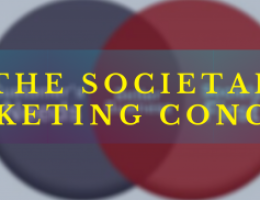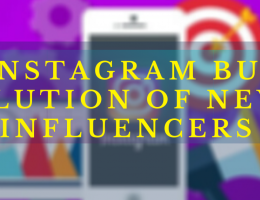
Micro-Influencers: The Hidden Marketing Tool
Being a social media influencer seems to be the next big thing. The social media influencer market was worth around $8 billion in 2019 and is set to cross the $15 billion mark by 2022. With the huge surge in social media usage in the past decade or so, the figures are only meant to climb upwards. Celebrity influencers charge an enormous amount of money for individual posts, and brands possessing the kind of sum required to satisfy such influencers are ready to invest their money into these schemes, which is why this is considered as the future of marketing.
Now is it actually a smart idea to be investing huge amounts into high-profile influencers? If we go by numbers and statistics alone, then it might be difficult to argue against it; the sheer reach of celebrity influencers is mind-boggling (their followers go into the millions) and this ensures that a large variety of people are introduced to the product being advertised.
But marketers have started reviewing their decision to opt for the largest possible reach of people. On the contrary, they have started to realise that it is much more profitable to reach out to a particular niche of people who are much more likely to be interested in their products. And seeing that celebrity influencers tend to have a much wider and unrelated base of followers, they might not be the best option for this.
The perfect solution to this dilemma is the category of micro-influencers. Social media influence is measured in terms of a number of subscribers/followers. The boundary between macro- and micro- influence may vary, but the commonly accepted figures are that anywhere between 1,000 and 1,00,000 followers will qualify as being micro-influencers. They tend to focus on a specific niche and are generally regarded as topic specialists.
Now on first look, this might not seem to be as efficient or profitable a technique, but there are reasons why e-commerce companies are shifting towards relatively smaller scale marketing strategies.
1. Cost-effectiveness: Number of subscribers/followers is the primary (or maybe the only) price factor in influencer marketing. While macro- and mega- influencers can charge from $20,000-$1,00,000 per post (or even more), micro-influencers charge only around $250-$500for the same, which is way more feasible for a newly formed start-up or a company with a modest marketing budget. Online entrepreneurs can initially aim for reaching out to a smaller but more loyal audience before gradually expanding their activities to a larger scale.
2. Availability for smaller businesses: Since they charge lower fees, it is by default that most micro-influencers readily agree to get affiliated with smaller businesses as well. Getting giant accounts to endorse your product might prove to be a huge task, which is why this is the simpler alternative while also being much more efficient.
3. Authenticity: Macro-influencers rarely share personal thoughts or moments in their social media accounts, having gathered massive publicity, whereas micro-influencers have attracted their followers by doing exactly the opposite. They have greater interactivity with their audience owing to more unique content. They usually specialise in a particular niche, whether it is travel vlogging, publishing food recipes or anything else. This results in a much higher level of relevancy, which attracts entrepreneurs. And of course, greater authenticity translates to them generating higher customer conversions and sales.
4. Engagement rate: A spike in the number of followers means a lower engagement rate. Micro-influencers with less than 2,000 followers are found to possess an engagement rate 7 times larger than that of influencers having more than 1 million followers. This trend shows that influencer-audience communication becomes less personal as the number of followers grows. The trusting relationship that an influencer has developed with their loyal followers has a better conversion rate in marketing aspects.
5. Niche demographic: Entrepreneurs can get more focused product publicity since the audience these influencers reach out to our people having similar interest in what they are doing. This results in a much higher percentage of the audience taking a genuine interest in what the influencer endorses and so they are more likely to be attracted to that product as well.
6. Time-saving tactics: Tackling huge accounts means dealing with a whole team including assistants, agents and more people. Micro-influencers on the other hand directly engage and negotiate partnerships with the entrepreneurs for a lesser fee. Their relatively smaller size means they are very efficient to work with as well. The chances of a successful campaign on a quicker timeline are much higher.
CONCLUSION
Influencers won the hearts of marketers a very long time ago. However, the latter has recently begun a transition from approaching the largest and widest base of audience possible to focusing towards a smaller group of people highly likely to get referred to their products or services through smaller, authentic and dedicated influencers. More companies are choosing to get into partnerships with multiple micro-influencers over single large-scale, big-budget influencers. While they might have lesser coverage, they clearly win in the relevancy and trust departments, thus establishing themselves as frontrunners in the influencer market industry.





